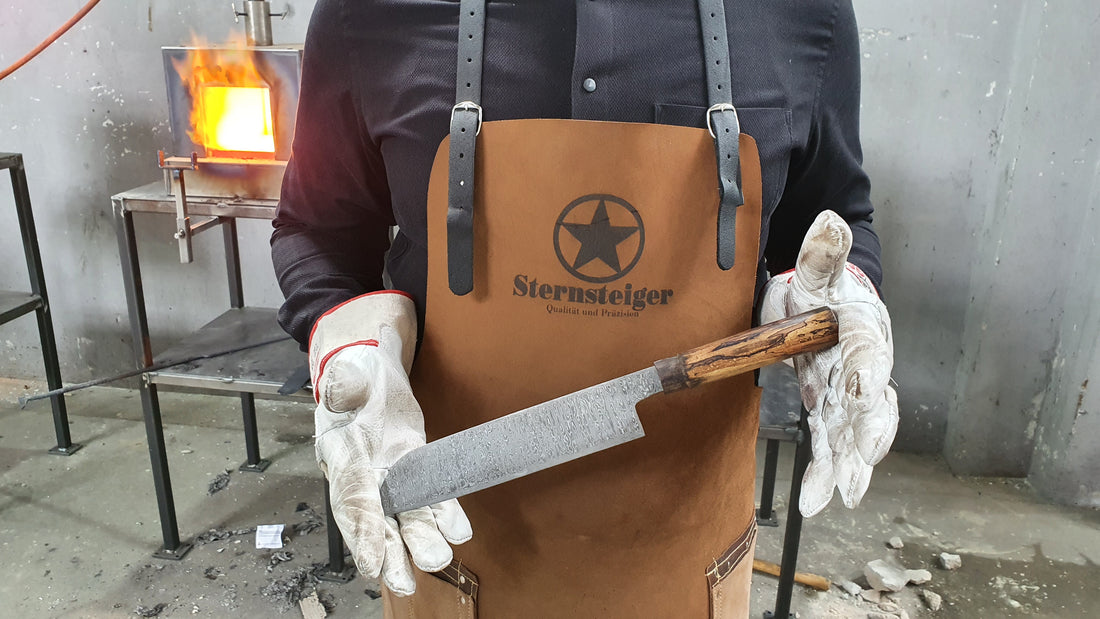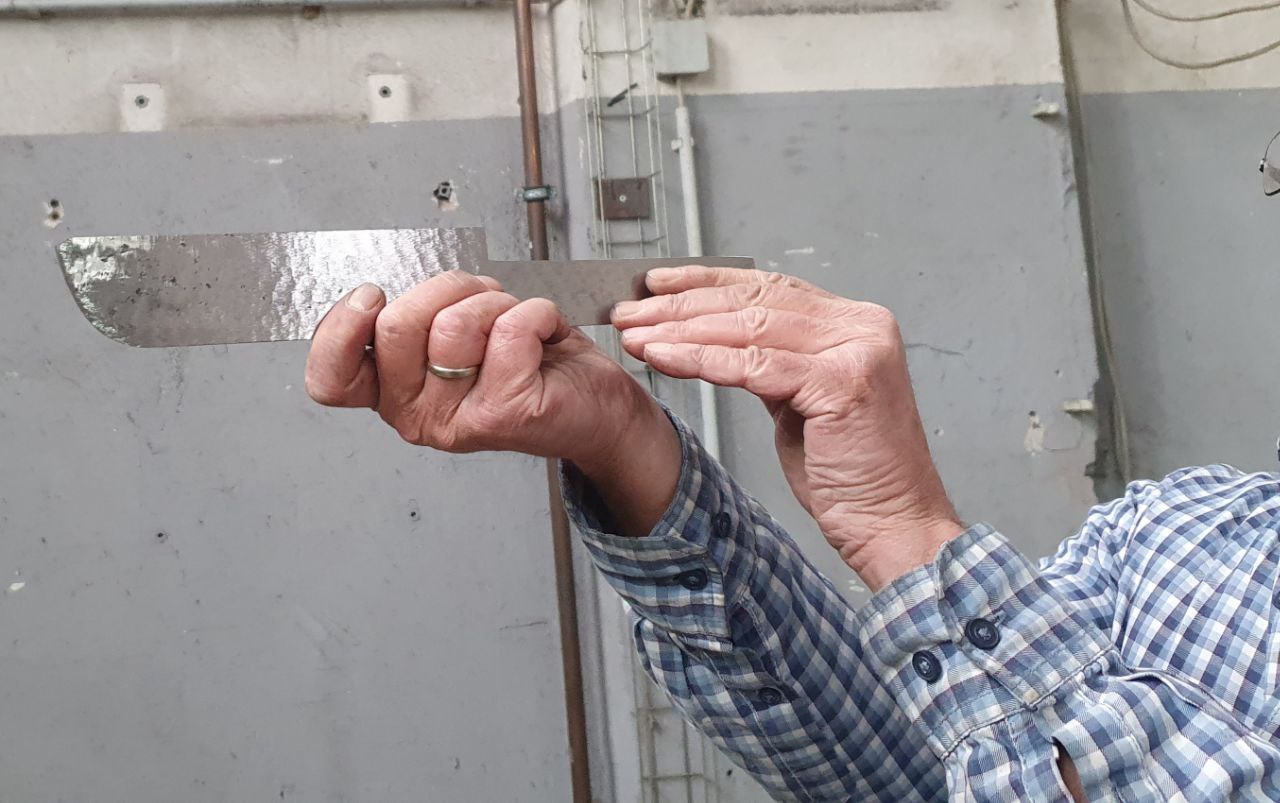Why it is so interesting to make a knife yourself:
It is very exciting to observe that the art of knife making, a craft as old as civilization itself, is experiencing a rebirth among artisans and enthusiasts today.
In a time when industrial mass production dominates, a growing community is returning to the roots of manual production. Because making your own knife is not only a return to these traditional techniques, but also offers a deeper, personal connection to the tool itself. You could also say that every self-made knife bears the signature of its maker.

For most people, however, the motivation to forge a knife themselves is to create something unique and personal. Because you could say that every curve and every edge is a testament to individual craftsmanship and dedication.
Unlike machine-made knives, which are often limited to standard dimensions and shapes, the handmade knife offers unparalleled customization and quality. It's not just about functional superiority, but also the aesthetic pleasure that a beautifully designed and well-executed knife can provide.
It is also a challenge that requires creative thinking and sensitivity. But the reward - a self-made and aesthetically pleasing knife - is worth every effort.
The process of manufacturing a self-forged knife:
The production of a knife begins with the forging of the blade. This process requires a high level of expertise and precision. The selected steels are heated and hammered into the desired shape. The right temperature is crucial here, otherwise the steel will be damaged or will not be able to develop its properties optimally.

After the blade is formed, heat treatment follows, which consists of hardening and tempering. Hardening involves reheating the blade and then rapidly cooling it to increase the hardness. Tempering is then done at a lower temperature to reduce the brittleness of the blade. These steps are very crucial to the longevity and functionality of the knife.
Once the blade is hardened and tempered, grinding and polishing follow. These processes refine the sharpness and finish of the blade. Grinding shapes the final cutting angle and removes excess material, while polishing smoothes and refines the blade.
The last step is to make the handle and assemble the components. The handle must not only fit well in the hand, but also be firmly connected to the blade. Materials such as walnut wood not only look good, but also feel pleasant.
Final assembly includes attaching the handle caps, inserting brass pins for additional stability, and carefully balancing the finished knife to ensure optimal performance and handling.
The result of this careful process is a functionally beautiful and high-performance knife that is worth showing off.
Our knife making courses:
If you decide to forge your own knife, Sternsteiger's " knifemaking courses " offer an excellent opportunity to delve deeply into the art of knifemaking under professional guidance.
These courses are designed for individuals or small groups and include the creation of a ready-to-use Damascus knife. The course also runs on weekends, making it ideal for working professionals.
Participants of the course will have the opportunity to choose different types of wood for the knife handle and will work with Damascus steel, which has up to 300 layers. The blade will be 18 cm long and 4.5 cm high.

All necessary materials are also included in the course, as well as a hot lunch, snacks and drinks. During the course you will not only learn how to shape the blade, but also how to optimally prepare it through various heat treatments such as hardening and tempering.
In addition, techniques for grinding, polishing and assembling the knives will be demonstrated. To participate, it is necessary to bring suitable work clothes, sturdy shoes, protective goggles and gloves to ensure that everything is done safely.
Taking part in such a course will not only enrich your craft skills, but also offers a unique opportunity to create your own high-quality knife that you can proudly display in your kitchen and can also present to your friends.



